1. THE RIVER CIVILISATIONS.
The first civilisations appeared in the 4th millennium B. C. due to several factors:
- First, the controlled use of water from the Tigris and Euphrates rivers in Mesopotamia and the Nyle in Egypt made more land avaible to farming.
- As a consquence, there was a rise of the agricultural production.
- Because of this, the population grew and the trade increased.
- Then arithmetic, geometry and writing appeared.
1. 2. Water managament.
In Egypt and Mesopotamia, rain was irregular and was necessary to use river water for agriculture.1. 2. 1. Egypt.
- The Nile flooded annually (June to September), watering the land along its banks.
- When the waters went down, the banks were covered with fertile sediments (silt) (in spanish, limo) and farmers started to sow (October to December).
- Later, they harvested before the next flood (February to June).
1. 2. 2. Mesopotamia.
In Mesopotamia, they developed an irrigation system composed of:- channels, to transport the water to the filds.
- cisterns (in spanish, cisternas) and dams to store it.
- locks (in spanish, esclusas) to regulate its flow.
| Channel. |
 |
| Lock. |
Irrigation in Ancient Egpyt.
Seasons of the Nile.
2. The birth of writing
Writing appeared in Mesopotamia around 3. 300 B. C.:- The earliest texts were about the control of irrigation systems, ownership of land and collection of taxes.
- Later orders and codes of laws.
- Finally, religious and literary texts which allow us to know about people's beliefs and cutoms.
- Cuneiform (in spanish, cuneiforme) appeared in Mesopotamia around 3. 300 B. C. It had the following characteristics:
- Consisted of a series of signs with a syllabic value.
- It had 2.000 signs and of those 600 were used frequently.
- It was written by making incissions with a stylus on wet clay tablets.
 |
| Cuneiform writing. |
 |
| Cuneiform script was written by making incissions with a stylus on wet clay tablets, because of that with time the symbols were simplified into lines with the form of a wedge. |
- Hyeroglyphic (in spanish, jeroglífica), appeared in Egpyt around 3.150 B.C. It had the following characteristics:
- It used drawings to express sounds, words or ideas (pictograms) (in spanish, pictogramas).
- Was used for officials or religious texts.
- Usually inscribed on stone or painted in walls.
- A symplified version (hieratic) was used for writing on papyrus, fabric or wood.
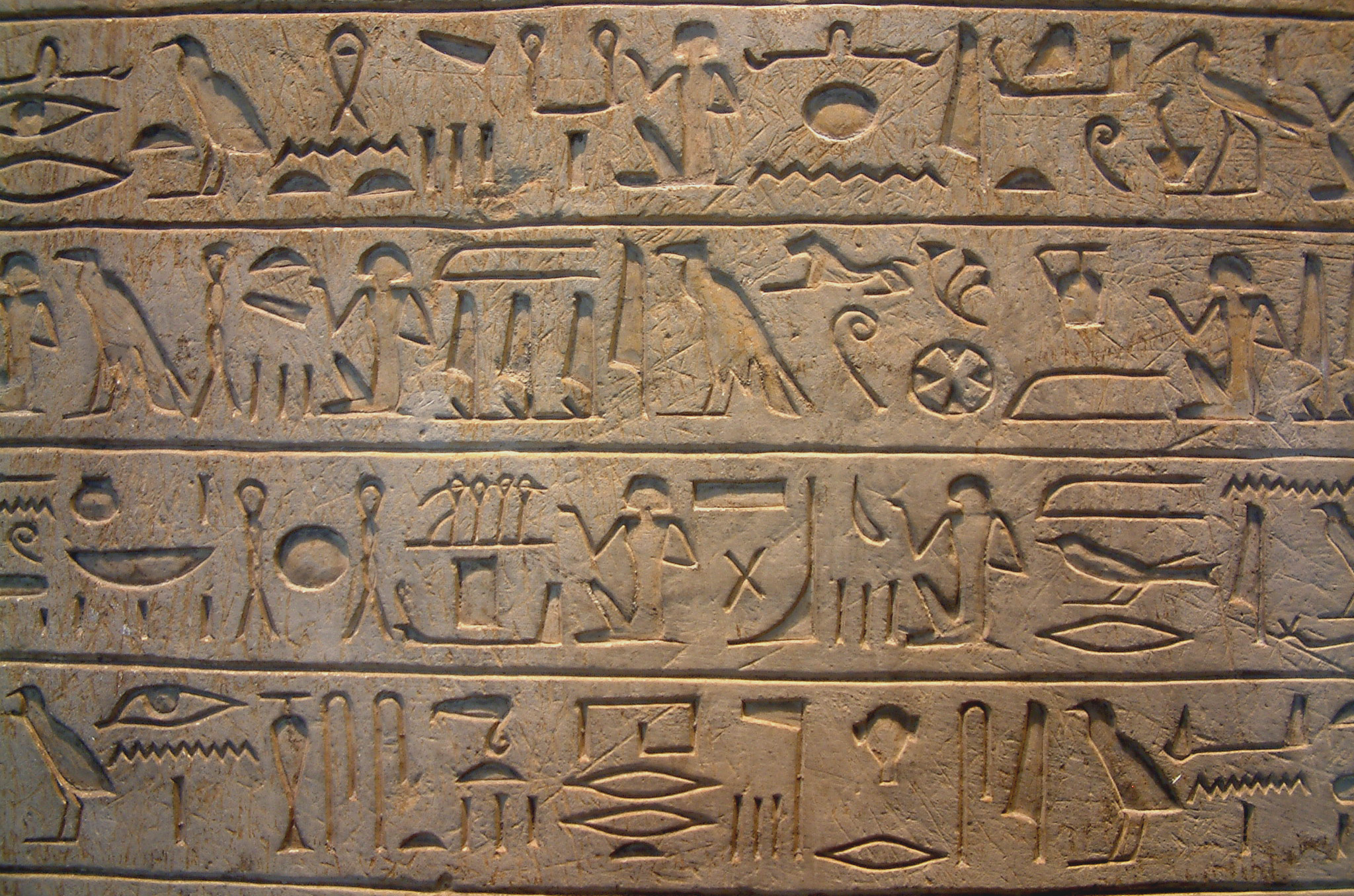 |
| Hieroglyphic writing. File: Egpyte louvre 144 hieroglyphes.jpg Author: Guillaume Blanchard. CC BY-SA 3.0 |

CURIOSITY.
Do you want to write your name using egyptian hieroglyphics? Try this link.
Do you want to write your name using cuneiform characters? Try this link.
Do you know who decided that days ought to have 24 hours? And who decided that hours ought to have 60 minutes?
Sumerians used a base 60 numeral system instead of our base system such as ours. Do you know that the peoples from Mesopotamia were able to count until sixty using their hands
2. MESOPOTAMIA, A LAND BETWEEN TWO RIVERS.
2. 1. The first city-states.
Mesopotamian civilization started with the arrival of a new people, sumerians that created an agrarian culture and the apparition of the first cities.Chronology: between 3.500 B. C. and 2.000 B. C.
Where: the Lower Mesopotamia (Sumer).
- Sumer was organised in city-states. A city-state (in spanish, ciudad estado) is a major city which controlled the land and villages around it. Had the several characteristics:
- Were independent.
- The most important were: Ur, Uruk, Eridu and Lagash).
- Were organised around a palace in which the king lived and a temple (ziggurat) (in spanish, zigurat) dedicated to the city's patron god.
- Had walls.
- City-state were ruled by a king:
- Had political, military and religious power.
- Ruled in the name of the gods.
- He ruled with the help of offcials, who managed the kingdom, supervised harvest and control trade; the priests who looked after the temples; and armies which protected the city.
2. 2. The first empires.
At the end of the 3nd millenium BC. appeared the first empires in Lower Mesopotamia (in spanish, Baja Mesopotamia):- The Akkadian Empire, established in 2.335 BC.
- The Kingdom of Ur, established in 2.110 BC.
- Babylon (in spanish, Babilonia), conquered all Mesopotamia in 1.800 B.C.The most important king was Hammurabi, the author of the first code of laws, the Code of Hammurabi.
- The Assyrians (in spanish, Asirios) which controlled a part of the Mediterranean Sea in 1.300 B.C.
2. 3. Mesopotamian art.
a) Architecture. Had the folowing characteristics:- Building were constructed using mud bricks (in spanish, adobe).
- Archs and vaults were used to cover spaces.
- Walls were covered with colourful ceramics.
- The most important buildings were:
- palaces
- ziggurats (stepped pyramid shaped temples).
- sculptures of kings and praying figures.
- reliefs (in spanish, relieves) and steles (in spanish, estelas) (large stone blocks).
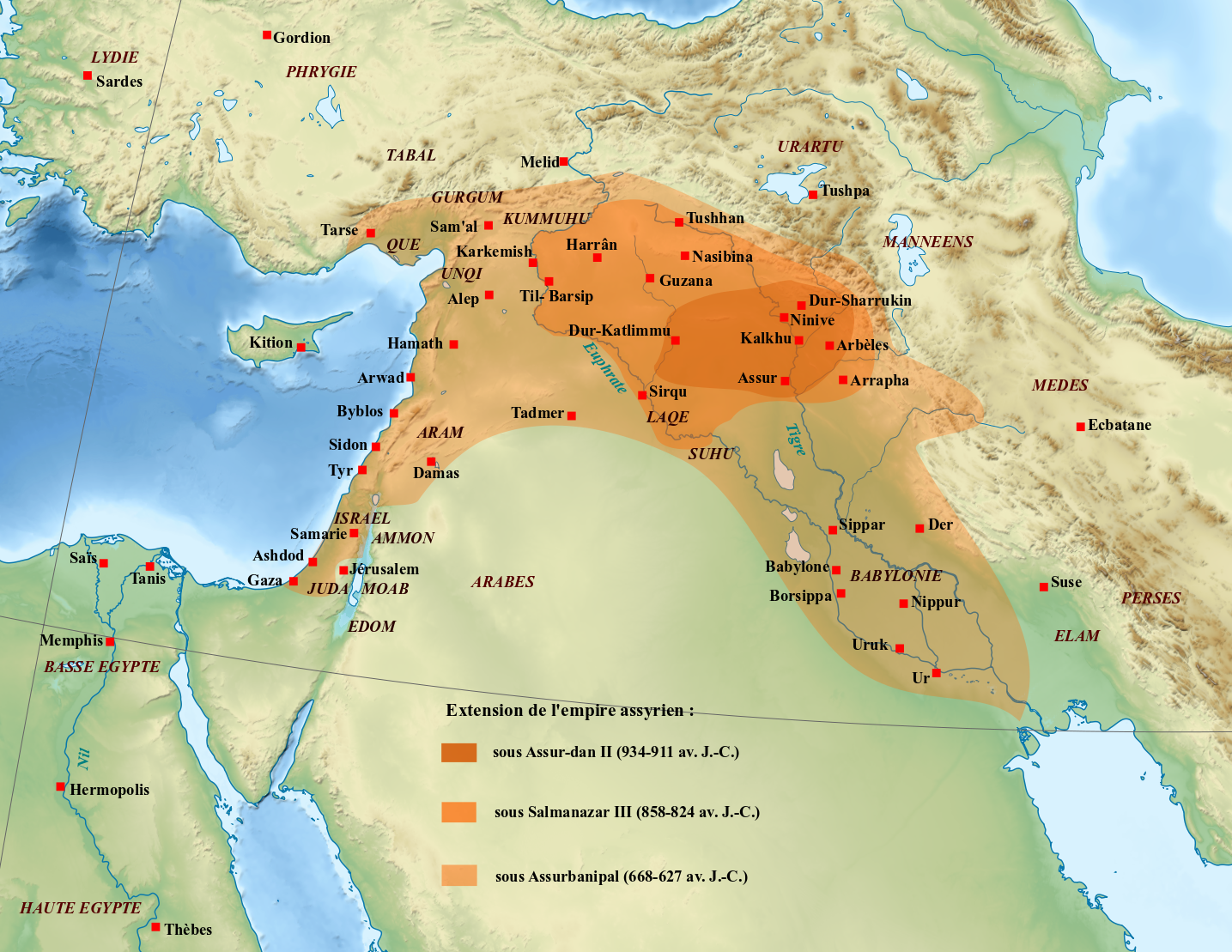 |
| Assyrian empire. |

Use of mud bricks, because there was no stone quarries in Mesopotamia. File:Mudbricks_in_Palestine_2011.jpg https://commons.wikimedia.org/wiki/User:Whiteghost.ink License: CC BY-SA 3.0

.jpg)
Use of arches and vaults to cover spaces. Ruins of Assur.
.jpg)
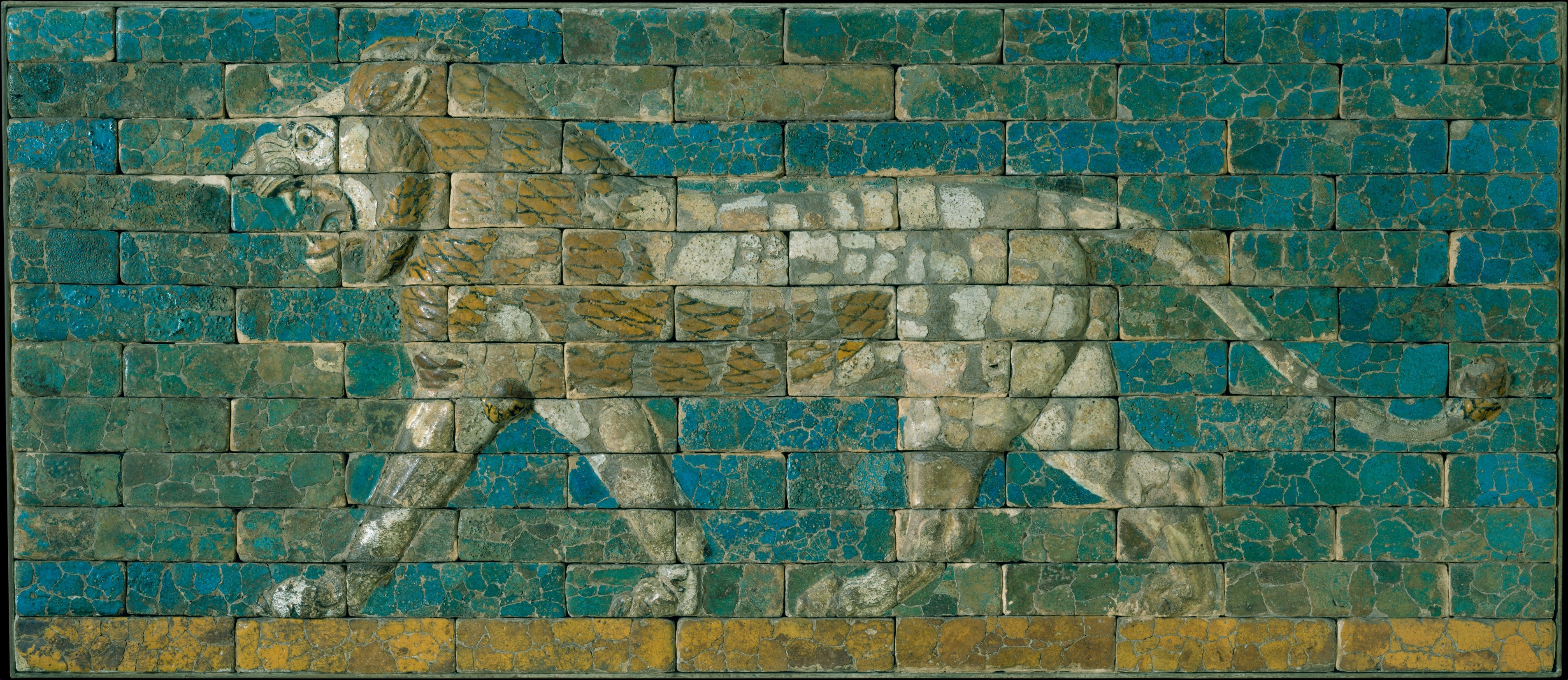 |
| Use of glazed ceramic brick to decorate walls. |
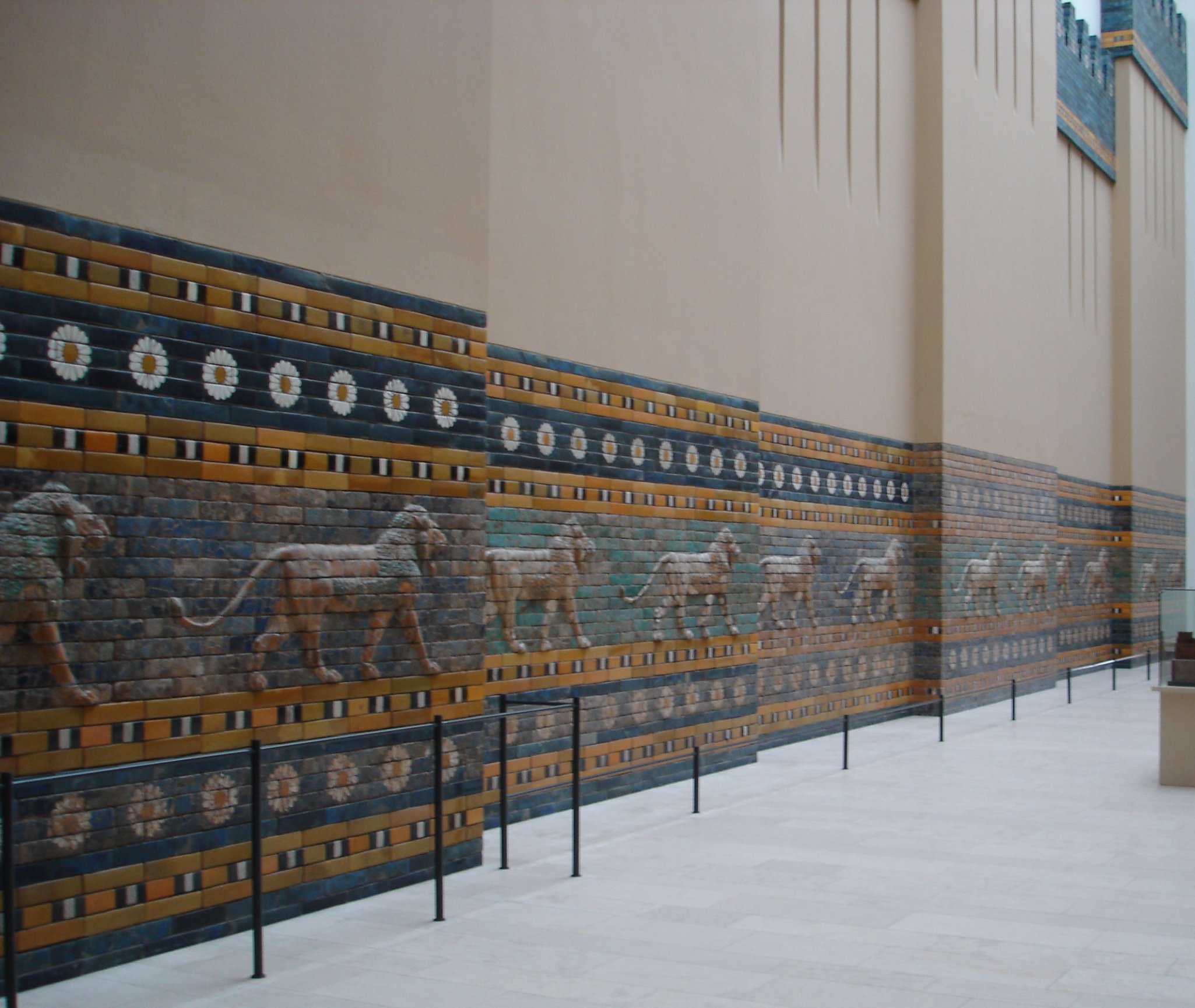
Reconstruction of the Processional Way of Babylon.


Virtual reconstruction of a mesopotamian ziggurat.


Ziggurat of Ur, partially rebuilt.

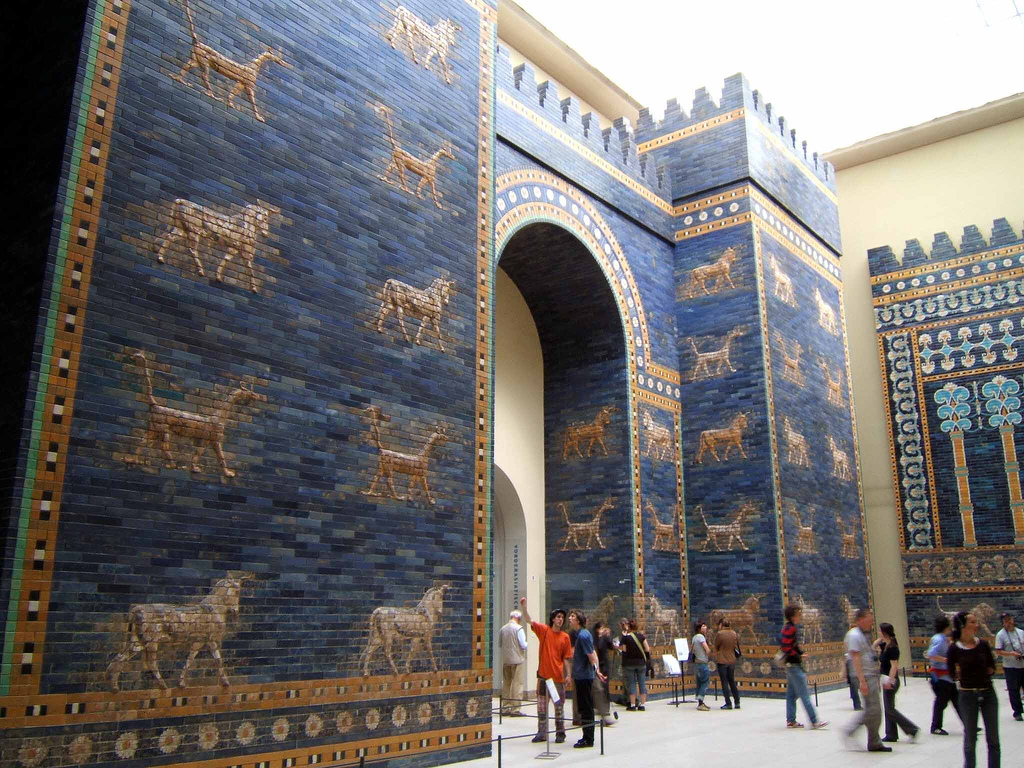 |
| Ishtar gate, a part of walls of Babylon. |
 |
| Sculpture of Gudea de Lagash. |
 |
| Stele of Hammurabi's Code of Laws. File:F0182_Louvre_Code_Hammourabi_Bas-relief_Sb8_rwk.jpg https://commons.wikimedia.org/wiki/User:Mbzt License: CC BY 3.0 |
3. ANCIENT EGYPT.
Egypt is a great desert crossed by the valley of a great river, the Nile. It can divided into two big regions:- The Lower Egypt (in spanish, Bajo Egipto), which included the Nile's delta area.
- The Upper Egypt (in spanish, Alto Egipto), a narrow fertile strip surrounded by the desert.
Around the 5th milenium B. C., the different tribes living in Egypt started to live along the Banks of the Nile Valley. Around 3.100 B. C., a King, Narmer, unified the Lower and the Upper Egpyt, becoming the first Pharaoh.
From them, Egypt was ruled by successive royal families, called dynasties (in spanish, dinastía), until it was conquered by the romans in 30 B. C.
From them, Egypt was ruled by successive royal families, called dynasties (in spanish, dinastía), until it was conquered by the romans in 30 B. C.
The Pharaoh.
The Pharaoh (in spanish, faraón) was considered a god and had absolute powers:- He was the owner of all the lands of Egypt.
- He controlled and led the irrigation works.
- He was a symbol of the unity of Egypt.
- The two crowns (in spanish, coronas):
- The white crown of the Upper Egpyt.
- The red crown of the Lower Egypt.
- The crook and the flail:
- The crook (in spanish, cayado), which symbolized the power of the pharaoph over his subjects.
- The flail (in spanish, latigo), which symbolized his duty to destroy the enemies of Egpyt.
- False beard (in spanish, barba falsa): represents the inmortality of the pharaoph.
- Uareus (cobra): a cobra that represents the goddess Wadjet that protects the pharaoph.

The pharaoh needed the help of a lot of people to rule. Egpyt was divided into provinces, called nomos, led by a governor. Furthermore, there were civil servants, priests, scribes and soldiers.
Ted Ed: History vs. Cleopatra
Egyptian society.
Egyptian society was divided between the privileged groups (around a 10% of the population) and the non privileged groups (90% of the population):
- The privileged groups owned most of the lands:
- the officials of the army: the soldiers protected Egypt from its enemy and maintain order. The army was led by the pharaoh.
Statues of egpytian soldiers - the civil servants (specially scribes): knew maths and how to read and write, because of that they were in charge of organize the irrigation works, tax collection and organise the army.
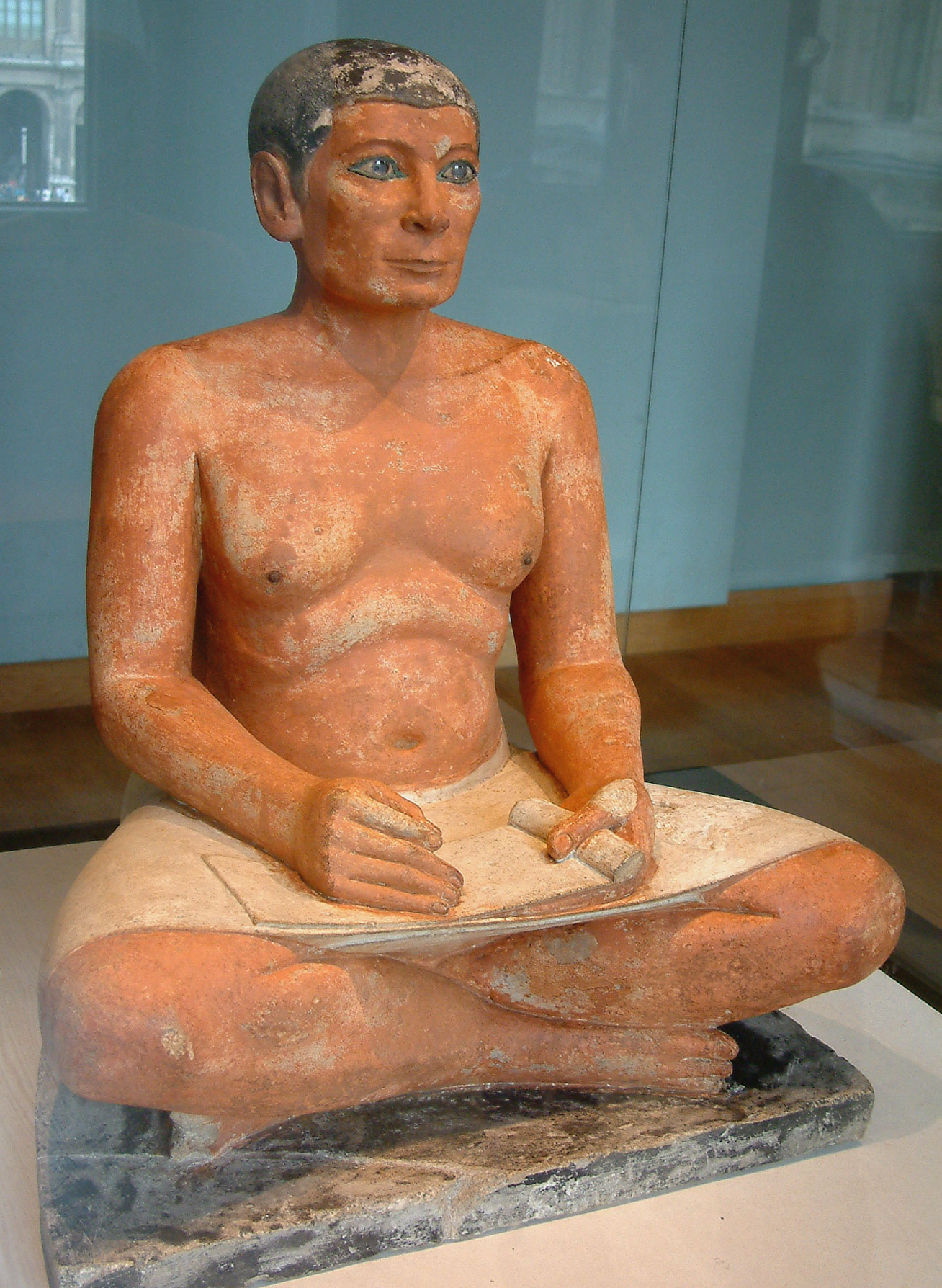
Statue of an scribe. - the priests, they lived in the temples which controlled a huge part of the lands of Egpyt, organised the religious rituals and studied sciences.
- The non privileged groups, around a 90% of the population.
- Artisans and merchants who lived in the cities. Among them weavers, potters, smiths.

Egyptian artisans. - Peasants, they were the majority of the population. They were free, but they had to work in the lands of the pharaoph an of the temples and had to give a large part of their harvest as a tribute.

Egpytian peasants. - Slaves, that were few in number, most of them were war prisoners or people with debts.
Daily life.
Most of Egyptians were peasants who lived in little towns or hamlets next to the Nile rive.- Men grow crops: grains (wheat and barley) and vegetables; and build dams and channels.
- Women help with the harvest and make bread, beer and clothes.
The daily diet was simple:
- bread (in spanish, pan) and beer (in spanish, cerveza).
- dried fish (in spanish, pescado seco)
- meat
- lentils (in spanish, lentejas) and peas.
- fruit: figs (in spanish, higos) and grapes (in spanish, uvas).
6. THE EGYPTIAN RELIGION.
The main characteristics of the Egyptian religion were:- Egyptians believed that the Universe was ruled by the gods who controlled the natural elements.
- Polytheism: they had many gods.
- Some of the gods had a zoomorphic aspect (animal head with a human body).
- They considered some animals, which were useful for them, sacred: Crocodile, Hippopotamus, Beetle, cat.
- The most important gods were:
- Amun (in spanish, Amón), god of the city of Thebes. He was identified with Ra god of the Sun and become Amun-Ra.
- Thoth (in spanish, Tot), secretary of the gods and the patron of scribes.
- Anubis, god of mummification and guardian of the tombs.
- Osiris,god of the dead, which was brought to life by her wife, Isis, after he was killed by his brother.
- Isis, wife of Osiris and goddess of fertility.
- Horus god of sky and war and son of Osiris and Isis.
 |
| Ra, god of the sun. |
 |
| Amun, god of Thebes. |
 |
| Thoth, god of wisdom. |
 |
| Osiris, god of mummification. |
 |
| Isis, wife of Osiris and godess of fertility. |
 |
| Anubis, god of mummification. |
 |
| Thoth, god of wisdom. |
6. 2. Life after death.
- Egyptians believed that humans has a body and a soul. They believed that the soul (ka) needed a body to stay in, because of that they practised mummification in order to preserve the body.
- To enter the afterlife the soul had to pass the Judgement of Osiris (in spanish, el Juicio de Osiris). If he passed the trial, he entered the kingdom of Osiris (the land of the dead), if he failed his soul would be devoured by a demon and his spirit ceased to exist.
- The Book of Dead (in spanish, el Libro de los Muertos) was a guide on how to pass this judgment.
5. 3. Mummification.
In order to enter the afterlife, Egyptians followed a very strict ritual:- Some of the organs were removed from the body.
- Then the body was covered with mineral salt (natron) and left for 40 days.
- The body was cleaned, filled with sawdust and anointed with oil.
- The body was bandaged.
- The organs were washed and embalmed and kept in jars.
- The mummy was put in a human-shaped sarcophagus with the Book of the Dead inside.
- The deceased was carried to the tomb and offerings such as food, furniture and figurine of servants, ushbati, were left inside the tomb
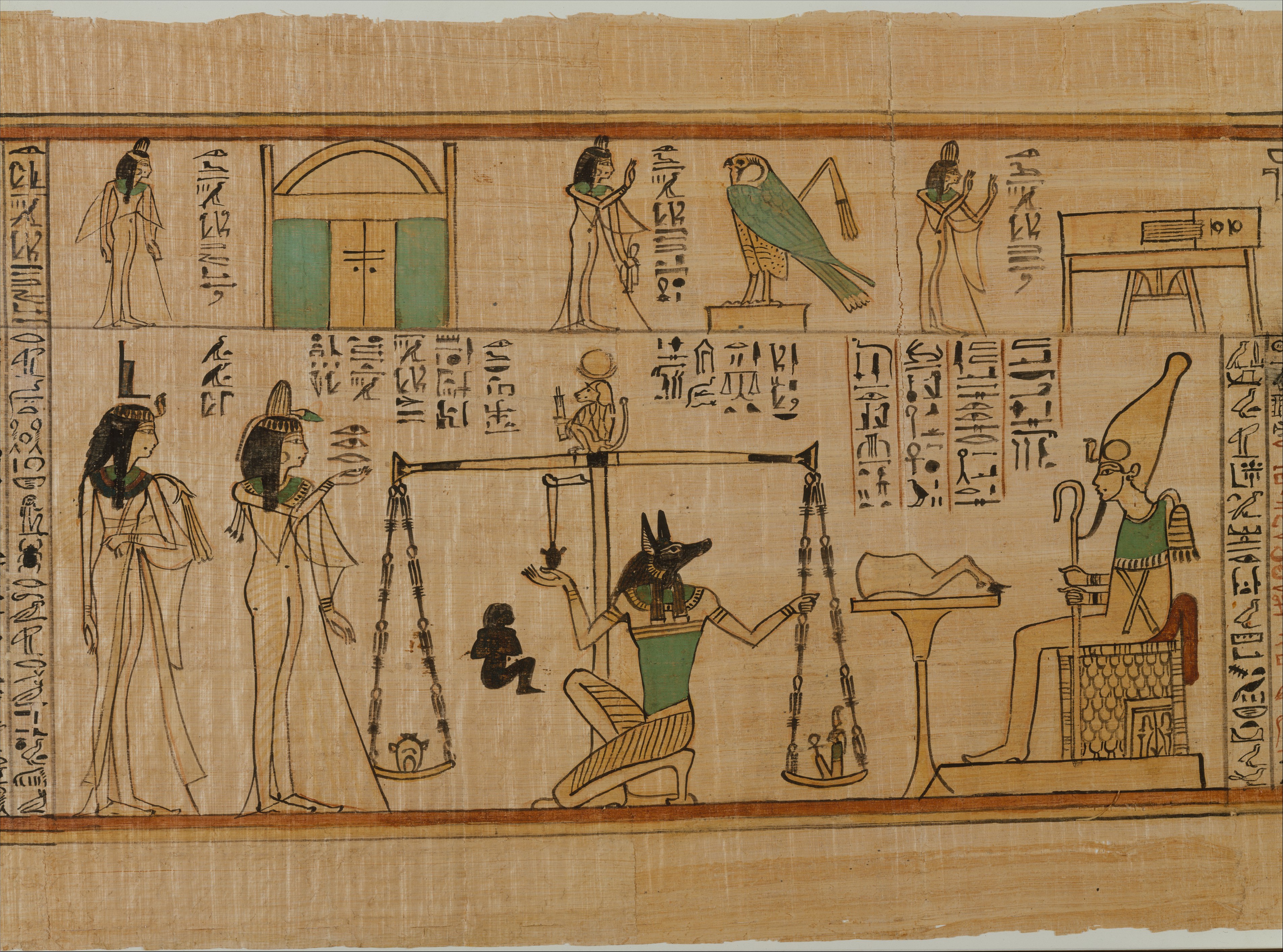 |
| Weighing of the heart. |
 |
| Canopic jars. |
5. 4. The temples.
The temples were very important because:- were considered the gods' homes on Earth.
- financial center, because it owned land and collected taxes from the peasants.
- place of knowledge, priests practised astronomy and mathematics and established the calendar, developed construction techniques.
- Priests lived in the temples. They served the gods, managed the temple and its land and supervised the peasants.
6. ART: TEMPLES AND TOMBS.
6. 1. Architecture.
The main characteristics were:- Buildings were made of stone.
- Had flat roofs supported by a lintel and columns
- Buildings were decorated with murals and sculptures.
- The main types of buildings were temples and tombs.
- Avenue of the Sphinxes (in spanish, Avenida de esfinges), where ceremonial processions entered the temple.
- pylon (in spanish, pilono), a huge wall located at the sides of the main entrance.
- the courtyard (in spanish, patio), an open space surrounded by columns.
- hypostyle hall (in spanish, sala hipóstila), a covered space with columns in which the people couldn't enter.
- the sanctuary (in spanish, santuario), where the statue of the god was kept in the dark.
.jpg) |
| Avenue of sphinx, temple of Karnak. |
 |
| Pylon of the Edfu Temple. |
| Courtyard, temple of Edfu. File: GD-EG-Efou022.JPG User: Nefermaat. (CC BY-SA 2.5) |
 |
| Hypostyle hall, temple of Edfu. File: Edfu Temple 032010 29.jpg User: MatthiasKabel (CC BY-SA 3.0) |
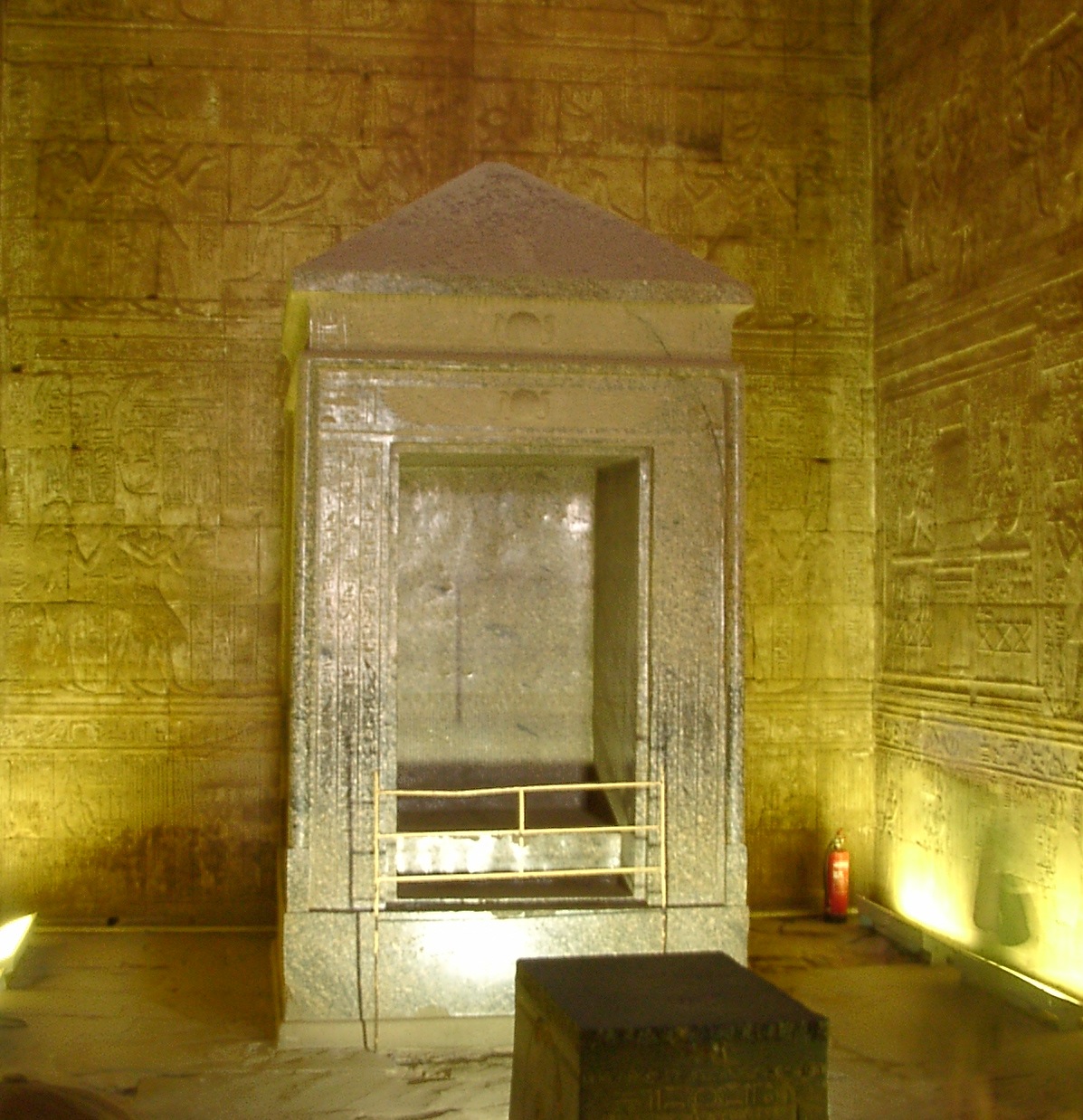 |
| Sanctuary, temple of Edfu. File:Edfu naos.jpg User:HoremWeb (CC BY-SA 4.0) |
Temples and rituals of Ancient Egypt.
Tombs were built to ensure the eternal rest of the pharaophs, their families and other privileged groups. Tombs were decorated with scenes from everyday life and the Book of the Dead (in spanish, el Libro de los Muertos). Also funerary objects were placed in the tombs.
We can distinguish several types of tombs:
- First, they built mastabas, simple, low rectangular structures with an underground burial chamber.
- Later, they started to build pyramids (in spanish, pirámide), colossal structures with a rectangular base. Apart from the pharaoph's burial chamber, contained several false burial chambers and
- Finally, they built hypogea (in spanish, hipogeo), large burial chambers hidden underground and decorated with paintings.
Sculpture.
The main characteristics of the egyptian sculpture were:- Use of symbolic features, for example different skin colour tos represent different social status.
- In paintings and reliefs, faces were shown in profile with the torso facing forward.
- More important figures were larger than other figures.
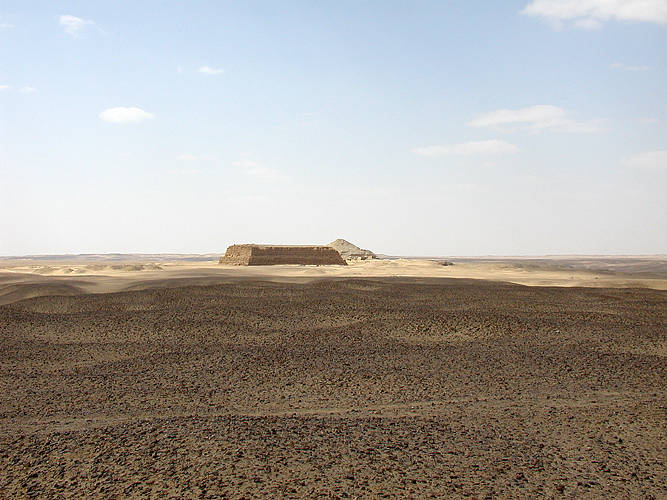 | ||||
| Mastaba of Shepseskaf. File:Mastaba-faraoun-1.jpg |
| Gyza pyramid cmplex, from left to right: Khufu's pyramid (in spanish, Keops), Khafre's pyramid (in spanish, Kefren) and Menkaure's pyramid (in spanish, Micerinos). |
 |
| Originally, the sides of the pyramids were completely smooth, because them were covered with slabs of polished stone. |

 |
| An example of hypogea, the funerary temple of Hatshesup. |
 |
| The interior of the tomb of Taousertet and Sethnakht in the Valley of the kings. |
 |
| Sphynx of Gizah. |
 |
| The pharaoph Menkaure with Hathor and another goddess. |
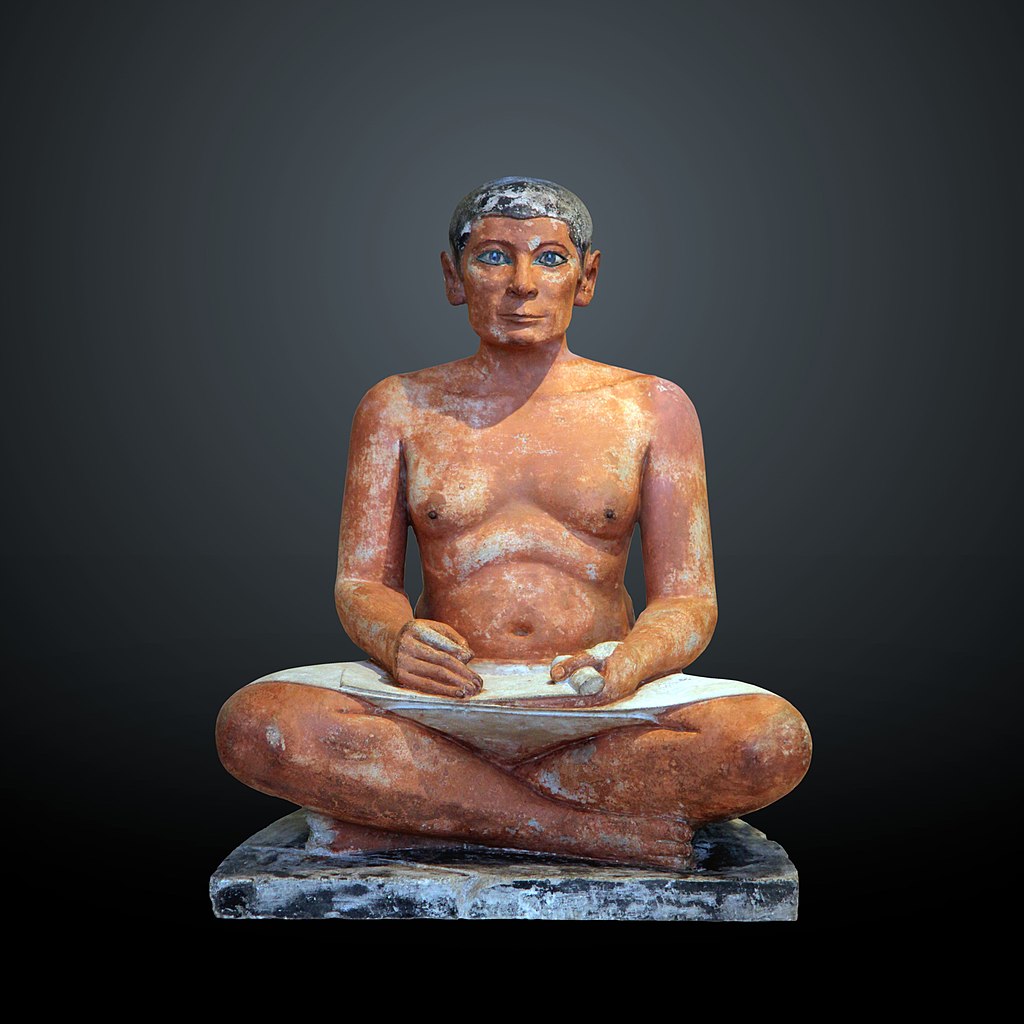 |
| Statue of an scribe. |
 |
| Temple of Abu Simbel. |
Assassins Creed discovery tour: Workers and construction.
Inside the Great Pyramid.
CURIOSITIES:
There is an ancient egyptian temple in Madrid, the Temple of Debod. Originally the temple was located near Assuan, but had to be relocated after the construction of the Assuan's dam. The temple was donated by Egypt to Spain in exchange for the help of the spanish government to salvage the temple of Abu Simbel.
EXTERNAL LINKS:
ACTIVITIES.
ACTIVIDADES.
1. Locate in this map the following natural regions: Lower Mesopotamia, Upper Mesopotamia, Lower Egypt y Upper Egypt.
2. Identify the following atributes of the egyptian pharaoh.
3. Say it the following texts are written using the cuneiform or the hieroglyphic writing system.
1. ________________________ 2.______________________________________
4. Review game.
THE FIRST
CIVILIZATION IN HISTORY
With an
A
|
The second period of Mesopotamian history where the people of central
Mesopotamia, led by their king, Sargon I, conquered Sumer.
|
||
With a B
|
A Mesopotamian city, located
between Sumer and Akkad that created an empire that reached its splendor in
the time of king Hammurabi.
|
||
With an
E
|
One of the
rivers flowing through the land
between two rivers.
|
||
Contains
G
|
A type of script which consisted of a succesion of
symbols and drawings.
|
||
With an L
|
Egyptian natural region located in the delta area of
the River Nile.
|
||
Contains M
|
The oldest code of law written in History
|
||
With an N
|
The
river that made possible the development of the Egyptian civilizations.
|
||
Contains a Q
|
The artificial application of water to
land to assist in the production of crops.
|
||
Contains R
|
A structure forming the curved, pointed, or flat
upper edge of an open space and supporting the weight above it, as in a
bridge or doorway
|
||
With an
S
|
First period of Mesopotamian
history, where the south of this region was organized in independent city-states
such as Ur.
|
||
With a T
|
One of the
rivers flowing through the land
between two rivers.
|
||
Contains V
|
A human being in
servitude as the property of a person or household.
|
||
With a Z
|
A
rectangular temple tower with successively smaller terraces erected in
Mesopotamia. The tower of Babel is thought to be one of these
|
||
With an A
|
Inhabitants of the mountains in North Mesopotamia
that in Mid-tenth century created a great empire.
|
||
With a C
|
A type of writing that Mesopotamian people did
making inscriptions on clay tables with a triangular object.
|
||
With an
E
|
A civilization that developed between 4000 BC and 31
BC along a narrow fringe on the bank of the Nile river.
|
||
Contains G
|
An ancient Egyptian subterranean burial chamber, carved
into rock.
|
||
With an H
|
Babylonian king who dominated all the territories of
Mesopotamia, and wrote the oldest written Code Law in History.
|
||
With an
I
|
Artificial watering of the land by means of ditches,
pipes, or streams; water artificially.
|
||
Contains
J
|
Recipient where the Egyptians preserved the purified
lungs, liver and brain of the dead.
|
||
With a K
|
Egyptian name for the soul. They thought the soul
need a body to stay in, which is why
they practiced mummification.
|
||
With an
M
|
Ancient civilization that developed
between 3500 BC and 539 BC around the rivers Tigris and Euphrates.
|
||
Contains
O
|
Ware, such as vases,
pots, bowls, or plates, shaped from moist clay and hardened by heat
|
||
With a P
|
People who conquered Mesopotamia in 539 BC, putting
and to the Mesopotamian civilization.
|
||
With an
S
|
Akkadian King who conquered Sumer.
|
||
With an
U
|
Egyptian natural located in the south area of the
Nile valley.
|
||
Contains
Y
|
The worship of or belief in
more than one god.
|
||
Contains
an A
|
A material on which to write made from the pith or
the stems of this plant, used especially by the ancient Egyptians
|
|
With a C
|
A town with its own
government that was both a city and an independent state
|
|
With an
H
|
The ancient Egyptian god of the sun, son of Osiris
and Isis, represented as having the head of a hawk
|
|
Contains
I
|
A massive monument of ancient Egypt having a
rectangular base and four triangular faces culminating in a single apex.
|
|
With an
M
|
An ancient Egyptian tomb with a rectangular base and
sloping sides and flat roof; "the Egyptian pyramids developed from it”.
|
|
Contains
N
|
The doctrine or belief that there is but one God.
|
|
With a P
|
Egyptian political and military ruler, owner of all,
considered by the people a living god.
|
|
With an S
|
A person who copies document, made handwritten
copies before the invention of printing.
|
|
Contains
a T
|
A large room of theEgyptian temples with a
flat roof supported by rows of columns.
|
|
With an
U
|
One of the ancient sumerian city-state.
|
THE FIRST
CIVILIZATION IN HISTORY
With an
A
|
The second period of Mesopotamian history where the people of central
Mesopotamia, led by their king, Sargon I, conquered Sumer.
|
Akkadian
|
|
With a B
|
A Mesopotamian city, located
between Sumer and Akkad that created an empire that reached its splendor in
the time of king Hammurabi.
|
Babylon
|
|
With an
E
|
One of the
rivers flowing through the land
between two rivers.
|
Euphrates
|
|
Contains
G
|
A type of script which consisted of a succesion of
symbols and drawings.
|
Hieroglyphic
script
|
|
With an L
|
Egyptian natural region located in the delta area of
the River Nile.
|
Lower Egypt
|
|
Contains M
|
The oldest code of law written in History
|
Code of Hammurabi
|
|
With an N
|
The
river that made possible the development of the Egyptian civilizations.
|
Nile
|
|
Contains a Q
|
The artificial application of water to land
to assist in the production of crops.
|
Irrigation techniques
|
|
Contains R
|
A structure forming the curved, pointed, or flat
upper edge of an open space and supporting the weight above it, as in a
bridge or doorway
|
Arch
|
|
With an
S
|
First period of Mesopotamian
history, where the south of this region was organized in independent
city-states such as Ur.
|
Sumerian
|
|
With a T
|
One of the
rivers flowing through the land
between two rivers.
|
Tigris
|
|
Contains V
|
A human being in
servitude as the property of a person or household.
|
Slave
|
|
With a Z
|
A
rectangular temple tower with successively smaller terraces erected in
Mesopotamia. The tower of Babel is thought to be one of these
|
Ziggurat
|
|
With an A
|
Inhabitants of the mountains in North Mesopotamia
that in Mid-tenth century created a great empire.
|
Assyrians
|
|
With a C
|
A type of writing that Mesopotamian people did
making inscriptions on clay tables with a triangular object.
|
Cuneiform writing
|
|
With an
E
|
A civilization that developed between 4000 BC and 31
BC along a narrow fringe on the bank of the Nile river.
|
Egyptian civilization
|
|
Contains G
|
An ancient Egyptian subterranean burial chamber, carved
into rock.
|
Hypogeum
|
|
With an H
|
Babylonian king who dominated all the territories of
Mesopotamia, and wrote the oldest written Code Law in History.
|
Hammurabi
|
|
With an
I
|
Artificial watering of the land by means of ditches,
pipes, or streams; water artificially.
|
Irrigated
agriculture
|
|
With an
M
|
Ancient civilization that
developed between 3500 BC and 539 BC around the rivers Tigris and Euphrates.
|
Mesopotamia
|
|
Contains
O
|
Ware, such as vases,
pots, bowls, or plates, shaped from moist clay and hardened by heat
|
Pottery
|
|
With a P
|
People who conquered Mesopotamia in 539 BC, putting
and to the Mesopotamian civilization.
|
Persians
|
|
With an
S
|
Akkadian King who conquered Sumer.
|
Sargon I
|
|
With an
U
|
Egyptian natural region located in the south area of
the Nile valley.
|
Upper
Egypt
|
|
Contains
Y
|
The worship of or belief in
more than one god.
|
Polyteistic
|
|
Contains
an A
|
A material on which to write made from the pith or
the stems of this plant, used especially by the ancient Egyptians
|
Papyrus
|
With a C
|
A town with its own
government that was both a city and an independent state
|
City-states
|
With an
H
|
The ancient Egyptian god of the sun, son of Osiris
and Isis, represented as having the head of a hawk
|
Horus
|
Contains
I
|
A massive monument of ancient Egypt having a
rectangular base and four triangular faces culminating in a single apex.
|
Pyramid
|
With an
M
|
An ancient Egyptian tomb with a rectangular base and
sloping sides and flat roof; "the Egyptian pyramids developed from it”.
|
Mastaba
|
Contains
N
|
The doctrine or belief that there is but one God.
|
Monotheistic
|
With a P
|
Egyptian political and military ruler, owner of allconsidered
by the people a living god.
|
Pharaoh
|
With an S
|
A person who copies document, made handwritten
copies before the invention of printing.
|
Scribe
|
Contains
a T
|
A large room of theEgyptian temples with a
flat roof supported by rows of columns.
|
Hypostyle
hall
|
With an
U
|
One of the ancient sumerian city-state.
|
Ur/Uruk
|
Contains
Y
|
A monumental gateway in the form of a pair of
truncated pyramids serving as the entrance to an ancient Egyptian temple
|
Pylon
|

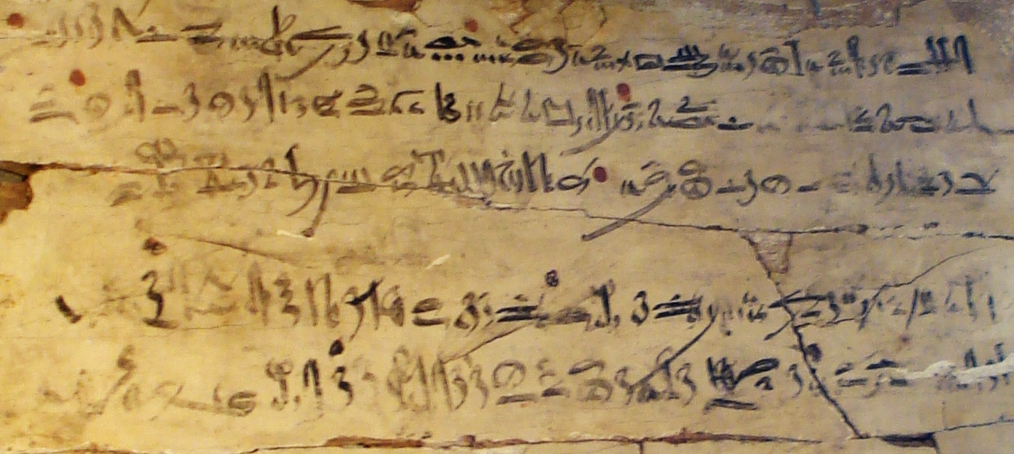


















No hay comentarios:
Publicar un comentario